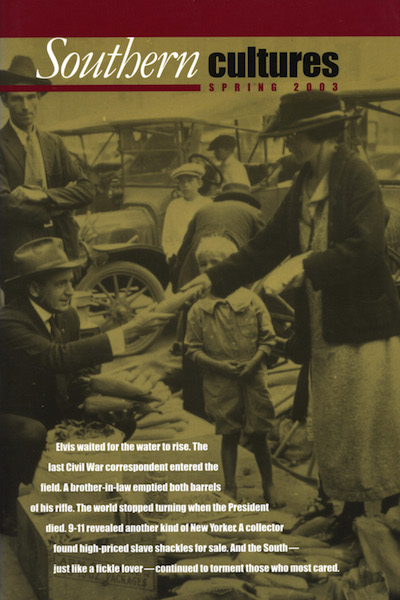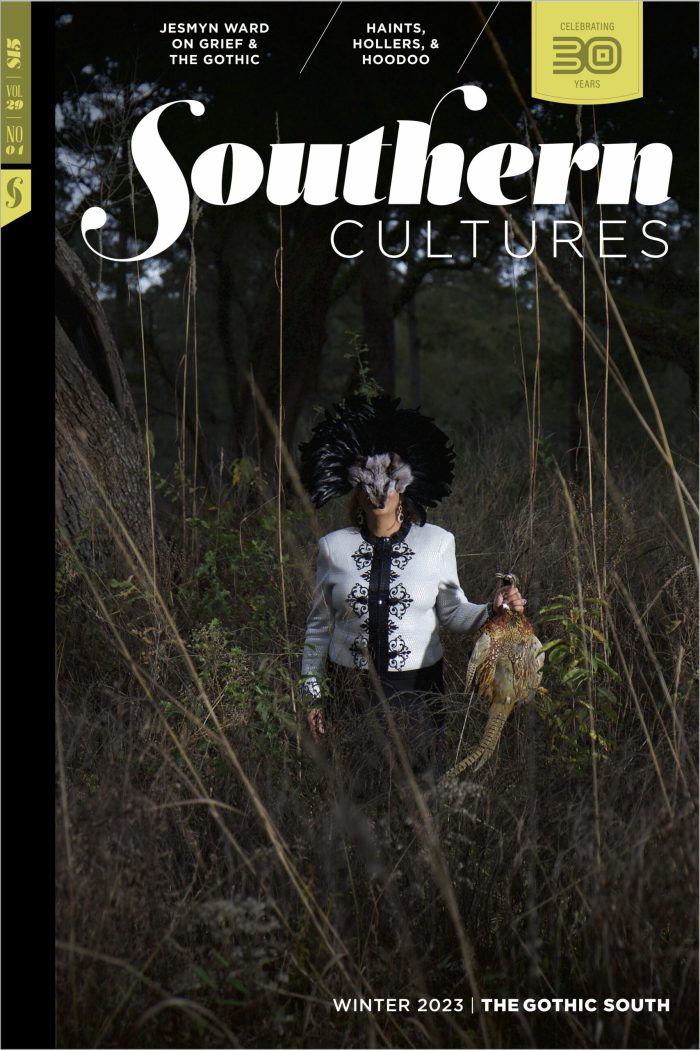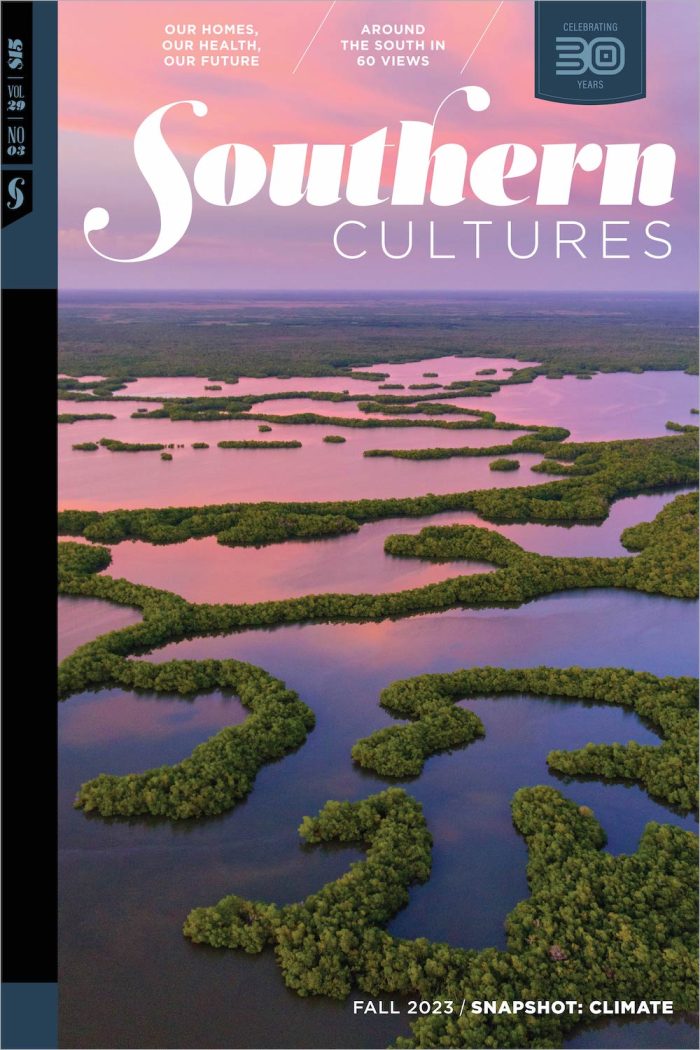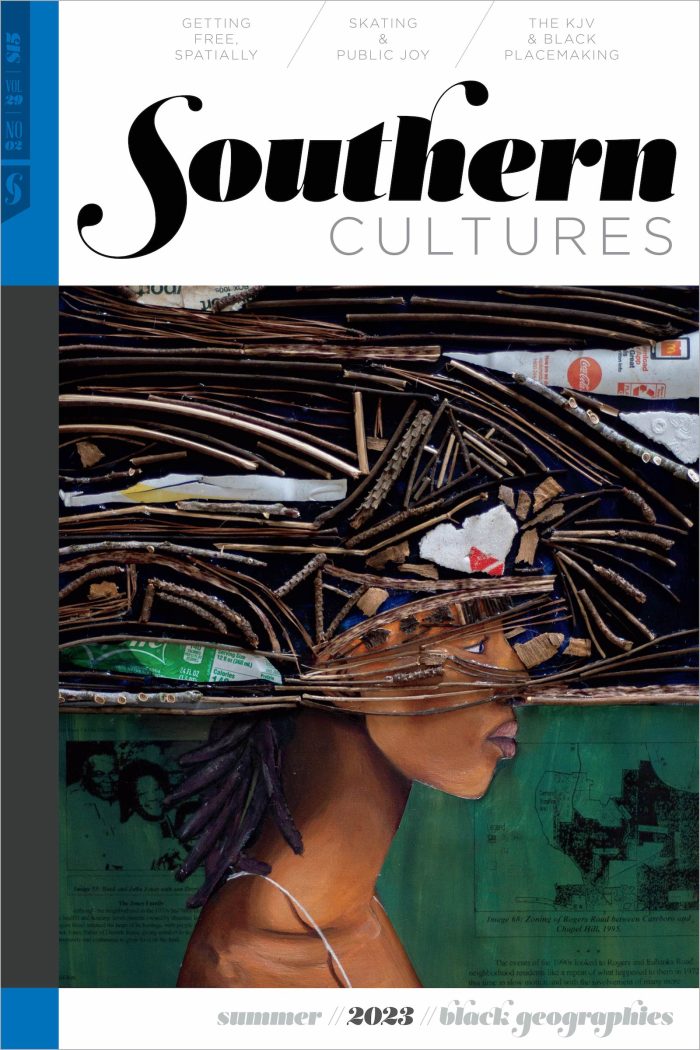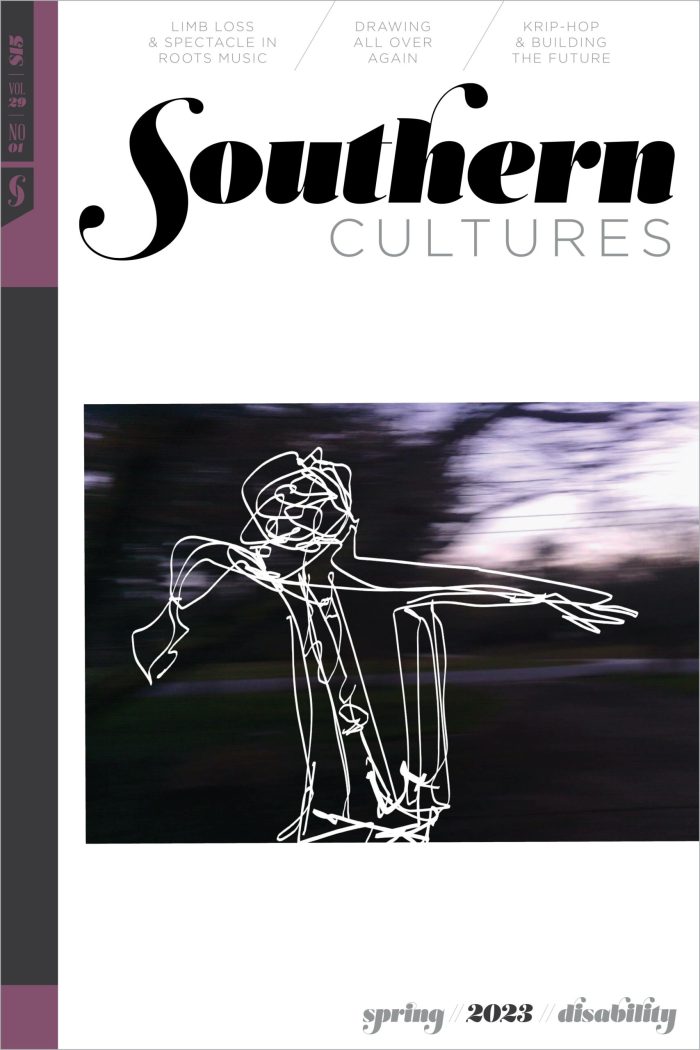BUY ACCESS
by Michael Sabota,
Leonard Wilson
“I figured I’d better wait awhile to see if y’all would settle down and get back to doing what you do best: aggravating people, but not insulting them.” It turns out that it would have been easier to quit the Mafia. We’re referring to our attempt to place a little time and distance between our »
BUY ACCESS
by Harry L. Watson
“If you’ve never thought of yin and yang as southern symbols, maybe you will now.” There used to be a kind of rag doll you could find in playrooms and on display in the homes of whimsical southern collectors. The one I remember clearest belonged to the only female doctor I knew and sat on »
BUY ACCESS
by John Shelton Reed
“What’s going on here? Texans and South Carolinians playing kissy-face with New York City? Isn’t New York the heart of Yankeedom? Isn’t it the city southerners love to hate?” In the days after September 11, when Americans were watching a lot of television, many of us heard a Texas man-in-the-street tell a network interviewer something »
BUY ACCESS
by Philip D. Beidler
“‘Like a fickle lover, the South has a way of tormenting those who care most about her.'” In the early 1930s, Carl Carmer and Clarence Cason wrote two remarkably similar, controversial cultural exposés of early-twentieth-century Alabama—Stars Fell on Alabama (1934) and 90 Degrees in the Shade (1935). One author was a cultural outsider; the other »
BUY ACCESS
The Last Civil War Correspondent Enters the Field
by Charlie Curtis
“At last Curtis could sense that he was closing in on the lost Confederates. It would be a two-mile trek through the seldom traveled woods outside Front Royal, Virginia, and it could easily result in a futile search for something no more than myth. As a known regional photographer, Curtis had been tipped by locals »
BUY ACCESS
by Lynn Casmier-Paz
“When I arrived at the Silver Spring Armory, I found the place jammed with brown and Black people hawking rusted ‘Authentic Slave Shackles’ that only a consumer with a platinum credit card could purchase.” Early in my research on slave narratives and the popular imagination I was leafing through moldy magazines when I became transfixed »
BUY ACCESS
by Anne Firor Scott
“For a moment the world stopped turning while we, a great nation, felt ourselves suddenly headless, directionless.” I am not sure why the number eighty seems so weighty, compared with its predecessor or even with its successor. What are the landmark ages? Being old enough to drive? To vote? Or fifty? One young friend told »
BUY ACCESS
by James Seay
There’s a black-and-white photo of Elvisand his father Vernon in their first swimming pool.Elvis is about twenty-one and “Heartbreak Hotel”has just sold a million.
BUY ACCESS
by Bruce E. Baker
“One December afternoon, he finished off a running argument with his younger brother-in-law with both barrels of a shotgun.” “In eighteen-hundred and ninety-eight,” as the song tells us, “Sweet Emma met with an awful fate.” Sweet Emma was Emma Hartsell, the twelve-year-old daughter of a farmer in Cabarrus County, North Carolina, and the awful fate »
BUY ACCESS
by Dale Volberg Reed
University of Georgia Press, 2001 Harlan Greene has set out to establish that John Bennett was a leading figure in the “Charleston Renaissance,” and he brings impressive credentials and a missionary zeal to the project. Greene, a Charlestonian, novelist, and archivist, became fascinated with Bennett while cataloging thirty linear feet of his papers at the »
BUY ACCESS
by Daniel S. Pierce
“Broome relished hiking through mist-shrouded old-growth forests, sleeping in the rain, or rock-hopping in winter on ice-covered boulders.” Characterized by imported garbage and nuclear waste; beer cans and other litter on the side of the road; soil erosion; kudzu growing over abandoned, rusting cars and washing machines; soil contaminated by the use and abuse of »
BUY ACCESS
by Carl Burkart
Princeton University Press, 2001 For decades, outside observers have wondered why white southern workers in the twentieth century have so willingly supported demagogues and reactionaries who offered them nothing but appeals to racial pride. In particular, many have asked, why did working class southerners follow a couple of decades of support for New Deal liberalism »
BUY ACCESS
by Nina Silber
Oxford University Press, 2001 Did the spouses of Civil War leaders ultimately affect the outcome of this pivotal event in American history? Would the war have gone differently if Stonewall Jackson or William Sherman had listened more to their wives? These are some of the questions considered in Intimate Strategies of the Civil War, although »
BUY ACCESS
by Linda Wagner-Martin
University of North Carolina Press, 2001 William Faulkner’s imagination has been the subject of literally hundreds of scholarly essays and books. Since his death in 1962, what people see as the enigma of this great American novelist has prompted biographies, close readings of his fictions, and a range of theoretical treatments of those works that »
BUY ACCESS
by John H. Haley
Louisiana State University Press, 2001 In July 1900, George Henry White allegedly stated, “May God damn North Carolina, the state of my birth.” If true, what prompted this comment? In 1896 White attained the highest public office of any African American at the time when he was elected to the United States House of Representatives. »
BUY ACCESS
by David Edwin Harrell
University Press of Mississippi, 2001 This sweeping survey of religion in Mississippi provides a guide for viewing the religious experience of the whole South. Randy Sparks has read broadly in the growing body of literature on southern religious history, and he carefully summarizes competing interpretations as he proceeds from colonial Catholicism to the contemporary stresses »
